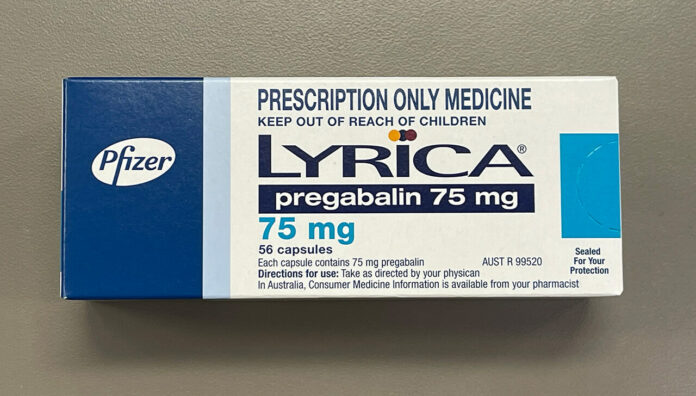Pregabalin is being used far beyond its approved indications. With rising concerns over safety, the focus is shifting to careful, individualised deprescribing strategies.
Gabapentinoids, such as pregabalin and gabapentin, were registered by the Therapeutics Goods Administration (TGA) in the early 2000s for epileptic seizures and neuropathic pain.
But it was when pregabalin (Lyrica) was listed on the Pharmaceutical Benefits Scheme (PBS) in 2013 for refractory neuropathic pain unable to be controlled by other drugs, that prescribing of the drug really took off.
By the 2018–19 financial year, pregabalin became the sixth most prescribed subsidised drug in Australia, with over 3.5 million PBS subsidised prescriptions issued.
The highest rate of prescribing of pregabalin is for women over 80 years of age, with one in 10 taking the medicine. Yet this cohort of patients is also at high risk due to their susceptibility to adverse effects.
Originally developed as anti-epileptic drugs, it was discovered that gabapentinoids work for some types of neuropathic pain by dampening down nerve transmission, said credentialed pharmacist and pain educator Dr Peter Tenni MPS.

‘But over the years, they have been used for all sorts of nerve-related pain, some of which is not neuropathic,’ he said.
Because gabapentinoids are broad-acting drugs, they have other effects – such as reducing anxiety, leading to approval for use in the United Kingdom for this indication.
‘If you have a drug that reduces anxiety, you will feel better – so a lot of people have a subjective improvement,’ Dr Tenni said. ‘But when you ask them about their pain, it’s no better.’
The topic of reduction or cessation frequently elicits a strong reaction from patients.
‘Patients will say, “Oh no, don’t touch the Lyrica. It’s working so well for me” – even when they haven’t seen an improvement in their pain,’ he said. ‘The big issue in the last 5–10 years has been dependence on these drugs.’
What nerve pain conditions does pregabalin actually help?
Only two types of neuropathic pain: diabetic neuropathy and post-herpetic neuralgia have strong evidence for effectiveness, said Dr Tenni.
‘There’s also some evidence for fibromyalgia, which is not truly a neuropathic pain,’ he added.
The use of pregabalin for other indications such as non-specific back pain, sciatica or even back pain with neurological features is not evidence based.
‘There’s no evidence that pregabalin is any better than placebo for these indications,’ Dr Tenni said.
In fact, around two out of every three prescriptions of pregabalin are for non-valid indications, most commonly for back pain and nerve sensitisation due to chronic pain, Dr Tenni said.
‘Although people feel better, and therefore may be able to tolerate their pain better, it’s not actually treating the underlying problems.’
Gabapentinoids also come with a host of unpleasant adverse effects, including:
- confusion and drowsiness
- dizziness resulting in falls
- weight gain
- peripheral edema
- misuse
- suicidality.
Despite their potential for harm, gabapentinoids remain Schedule 4 medicines.
‘In the United States and the UK, pregabalin was [upscheduled] to the equivalent of Schedule 8 in Australia,’ Dr Tenni said.
‘Whereas we only added a boxed warning to advise prescribers that there is a risk of misuse with this medication in 2021.’
Who is a good candidate for deprescribing?
Pharmacists should consider initiating a discussion about deprescribing pregabalin with patients who:
- are not prescribed the medicine for a valid indication
- are at risk of misuse
- either have obvious adverse effects or are at high risk of adverse effects.
‘For example, 80 year old patients who have poor kidney function and are also taking opioids are going to be at higher risk from pregabalin,’ Dr Tenni said.
How should deprescribing be approached?
Going cold turkey or reducing gabapentinoids too quickly can lead to withdrawal symptoms, including agitation, depression, worsening confusion and even convulsions. So a slow, tapered approach is required.
‘There’s now good evidence, such as the Maudsley Deprescribing Guidelines, to show that for drugs that work on receptors, when you double the dose, you don’t double the effect,’ Dr Tenni said. ‘The corollary of that is, if you half the dose, you don’t half the effect.’
For example, when a patient’s dose of pregabalin is halved from 600 mg to 300 mg, the full possible clinical effect is only reduced by 8%. But reducing the dose from 25 mg to 0 mg means patients experience a reduction from 30% of the clinical effect to 0%, relative to the 600mg dose.

‘So it’s more difficult in terms of withdrawal symptoms to drop from 25 mg to 0 mg than it is to drop from 600 mg to 300 mg.’
How should you broach a conversation about deprescribing?
Find a hook, such as an effect of the drug the patient is unhappy with.
‘For example, I had a patient who played bridge, and mentioned she found it harder to concentrate on the game since commencing pregabalin,’ Dr Tenni said. ‘When I said that Lyrica may have that effect, she was much more motivated to get off it.’
For others, it may be the swelling in their legs that troubles them. ‘Suggest trying a month or two off Lyrica to see if it helps with the oedema,’ he said.
Sometimes that discussion goes wider than the person who is taking the medicine.
‘If it’s an older person and family members think they appear to be getting more confused, for example, you could suggest that pregabalin might be contributing to that,’ Dr Tenni said.
‘You could ask, “Would you be on board if we tried reducing the dose for a month or two to see if there is any improvement?”’
Who is more likely to have withdrawal issues?
Older, frail patients are at high risk of experiencing withdrawal effects from deprescribing gabapentinoids, along with those who have:
- significant tolerance to the medicine or experience of inter‐dose withdrawal
- a past history of severe withdrawal symptoms on dose reduction or skipping doses
- used the medicine long‐term use
- repeated cycles of psychiatric medication use and cessation which may have to lead to sensitisation.
‘In those people, you have to be much more careful,’ Dr Tenni said.
But each patient will be different. So it’s important to establish a baseline of all their symptoms and monitor which of these that are related to withdrawal become worse after making the first dose reduction.
‘I get patients to grade their symptoms. For example, I’ll ask “Do you have any anxiety? Grade it from one to 10”,’ he said.
After taking the first step down, assess whether their anxiety is worse (i.e. re-grade), and if so – is it tolerable.
‘If it’s not tolerable, go back to the dose you were at and make a smaller step down in 2 weeks or a months’ time,’ Dr Tenni said.
For some patients, deprescribing can take a year or longer, and some steps in the deprescribing schedule will be below the dose size of the smallest capsule – so compounding or dispersal may be necessary.
‘Pharmacists can then work out a schedule which has very small, incremental reductions in the milligrams, which is not necessarily small reductions in the effectiveness percentages,’ Dr Tenni said.
To hear more from Dr Tenni on deprescribing gabapentinoids, register to attend CPC25, held from 2-4 May 2025 in Adelaide.






 Pharmacists have always prescribed, but they have the potential to prescribe much more
Pharmacists have always prescribed, but they have the potential to prescribe much more








